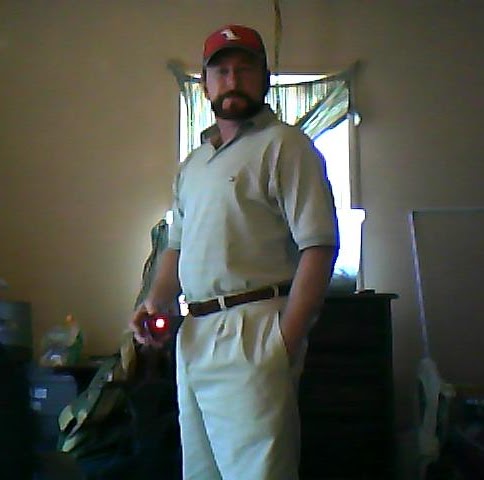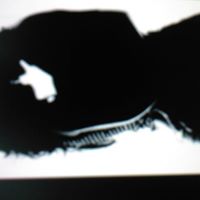Gregory H Rhodes
age ~54
from Lexington, MA
- Also known as:
-
- Gregory Vander Rhodes
- Gregory V Rhodes
- Gregory H Vanderrhodes
- Greg Rhodes
- Gregory H Vander
- Greg Vander Rhodes
- Gregory S
- Greg S
- Greg Vander
- Phone and address:
-
200 Follen Rd, Lexington, MA 02421
(781)8625423
Gregory Rhodes Phones & Addresses
- 200 Follen Rd, Lexington, MA 02421 • (781)8625423
- 237 Grove St, Melrose, MA 02176 • (781)6620840
- 27 Longwood Ave, Brookline, MA 02446
- Boston, MA
- Wilmington, MA
- Pittsburgh, PA
- Newton, MA
- Gray, TN
Isbn (Books And Publications)

License Records
Gregory Lee Rhodes
License #:
RS169712L - Expired
Category:
Real Estate Commission
Type:
Real Estate Salesperson-Standard
Name / Title
Company / Classification
Phones & Addresses
S&G WESTHEIMER RHODES MANAGEMENT, LLC
BIG TEN AUTO, LLC
Us Patents
-
Assembly Of Optical Components And Method For Assembling Same
view source -
US Patent:7302136, Nov 27, 2007
-
Filed:Mar 19, 2004
-
Appl. No.:10/804641
-
Inventors:Daryoosh Vakhshoori - Cambridge MA, US
Masud Azimi - Belmont MA, US
Gregory Vander Rhodes - Melrose MA, US -
Assignee:Ahura Corporation - Wilmington MA
-
International Classification:G02B 6/26
G02B 6/42 -
US Classification:385 31, 385 52, 385 33
-
Abstract:An assembly is disclosed for optical components, the assembly comprising: a platform for receiving and supporting a plurality of carrier components having optical components mounted thereon; carrier component receiving stations formed on the platform, each of the stations being adapted to receive and retain one of the carrier components; a first one of the carrier components having a light beam outlet; and a second one of the carrier components having a light beam receiving port, wherein the optical component receiving stations are disposed to position the first one of the components and second one of the components relative to one another such that the light beam outlet and the light beam receiving port are in alignment with one another.
-
Supporting Remote Analysis
view source -
US Patent:8203700, Jun 19, 2012
-
Filed:Apr 14, 2009
-
Appl. No.:12/423203
-
Inventors:Gregory Vander Rhodes - Melrose MA, US
Kevin J. Knopp - Newburyport MA, US
Christopher D. Brown - Haverill MA, US -
Assignee:Ahura Scientific Inc. - Wilmington MA
-
International Classification:G01N 21/35
G01N 21/65 -
US Classification:356 73, 356301, 25033908, 37910602, 4555561
-
Abstract:This disclosure relates to a method that includes receiving infrared adsorption absorption information for a sample, processing the infrared adsorption absorption information for the sample to determine an identity of the sample, generating a reference signature for the identified sample, and distributing the reference signature for the identified sample to a plurality of handheld measurement devices via cellular connections with the handheld measurement devices.
-
Compact Multipass Optical Isolator
view source -
US Patent:20040240031, Dec 2, 2004
-
Filed:Mar 15, 2004
-
Appl. No.:10/802069
-
Inventors:Masud Azimi - Belmont MA, US
Daryoosh Vakhshoori - Cambridge MA, US
Kevin Knopp - Newburyport MA, US
Gregory Rhodes - Melrose MA, US
Peidong Wang - Carlisle MA, US -
International Classification:G02F001/09
G02F001/00 -
US Classification:359/280000
-
Abstract:An optical isolator is disclosed for transmitting light in a first direction and blocking light in a second direction along an optical pathway. The optical isolator includes an input polarizer having a pass axis at first angle, an output polarizer having a pass axis at second angle, a Faraday rotator material between the polarizers having a Verdet constant and an axis of maximum length therethrough, generation means for generating a magnetic field around and inside the rotator material, and at least one reflector configured to define an optical length through the rotator material which is longer than the axis therethrough. The optical pathway length through the rotator material, the magnetic field strength, and the Verdet constant are selected so as to rotate light through the Faraday rotator material from the first angle to the second angle.
-
Raman Optical Identification Tag
view source -
US Patent:20050225758, Oct 13, 2005
-
Filed:Mar 23, 2005
-
Appl. No.:11/088169
-
Inventors:Kevin Knopp - Newburyport MA, US
Daryoosh Vakhshoori - Cambridge MA, US
Gregory Rhodes - Melrose MA, US -
International Classification:G01J003/44
G01N021/65 -
US Classification:356301000
-
Abstract:A method for tagging and identifying a composition using Raman spectroscopy is disclosed, the method comprising tagging the composition by disbursing additional individual tag molecules throughout a base material thereof so as to create a tagged material having a spectral profile with a specific Raman optical signature encoded therein, wherein the specific Raman optical signature of the tagged material is distinct from the native Raman optical signature of the base material; and identifying the composition by reading a spectral response of the tagged material with a Raman spectroscopic technique so as to identify the composition based on the specific Raman optical signature encoded in the tagged material rather than the native Raman optical signature encoded in the base material.
-
Use Of Free-Space Coupling Between Laser Assembly, Optical Probe Head Assembly, Spectrometer Assembly And/Or Other Optical Elements For Portable Optical Applications Such As Raman Instruments
view source -
US Patent:20060170917, Aug 3, 2006
-
Filed:Aug 30, 2005
-
Appl. No.:11/215526
-
Inventors:Daryoosh Vakhshoori - Cambridge MA, US
Peili Chen - Andover MA, US
Masud Azimi - Belmont MA, US
Peidong Wang - Carlisle MA, US
Yu Shen - Waltham MA, US
Kevin Knopp - Newburyport MA, US
Leyun Zhu - Andover MA, US
Christopher Brown - Haverhill MA, US
Gregory Vander Rhodes - Melrose MA, US -
International Classification:G01J 3/44
G01N 21/65 -
US Classification:356301000
-
Abstract:A compact, lightweight, portable optical assembly comprising: a platform; and a plurality of optical elements mounted to the platform; wherein the plurality of optical elements are optically connected to one another with free-space couplings so as to form an optical circuit; and further wherein the platform is sufficiently mechanically robust so as to maintain the free-space optical coupling between the various optical elements. A method for making a compact, lightweight, portable optical assembly, comprising: providing a platform; and mounting a plurality of optical elements to the platform; wherein the plurality of optical elements are mounted to the platform so that they are optically connected to one another with free-space couplings so as to form an optical circuit; and further wherein the platform is sufficiently mechanically robust so as to maintain the free-space optical coupling between the various optical elements.
-
Compact Multipass Optical Isolator
view source -
US Patent:20070091412, Apr 26, 2007
-
Filed:Jun 2, 2006
-
Appl. No.:11/446584
-
Inventors:Masud Azimi - Belmont MA, US
Daryoosh Vakhshoori - Cambridge MA, US
Kevin Knopp - Newburyport MA, US
Gregory Rhodes - Melrose MA, US
Peidong Wang - Carlisle MA, US -
International Classification:G02F 1/09
-
US Classification:359280000
-
Abstract:An optical isolator for transmitting light in a first direction along an optical pathway and blocking light in a second direction along an optical pathway. The optical isolator includes an input polarizer having a pass axis at a first angle, an output polarizer having a pass axis at a second angle, a Faraday rotator material between the polarizers having a Verdet constant and an axis of maximum length therethrough, generation means for generating a magnetic field around and inside the rotator material, and at least one reflector configured to define an optical length through the rotator material which is longer than the axis therethrough. The optical pathway length through the rotator material, the magnetic field strength, and the Verdet constant are selected so as to rotate light through the Faraday rotator material from the first angle to the second angle.
-
Spectrum Searching Method That Uses Non-Chemical Qualities Of The Measurement
view source -
US Patent:20080033663, Feb 7, 2008
-
Filed:Aug 7, 2007
-
Appl. No.:11/890780
-
Inventors:Christopher Brown - Albuquerque NM, US
Gregory Vander Rhodes - Melrose MA, US -
International Classification:G01R 23/16
-
US Classification:702028000
-
Abstract:In one form of the invention, there is provided a method for determining the most likely composition of a sample, comprising: obtaining data from a sample, wherein the data comprises a representation of a measured spectrum; determining the precision state of the representation of the measured spectrum; providing a plurality of library candidates and, for each library candidate, providing data representing the same, wherein the data comprises a representation of a library spectrum; determining a representation of the similarity of the sample to each library candidate using (i) the representation of the measured spectrum; (ii) the precision state of the representation of the measured spectrum; and (iii) the representation of the library spectrum for that library candidate; and determining the most likely composition of the sample based upon the determined representations of similarity of the sample to each library—candidate. In another form of the invention, there is provided a method for determining the most likely composition of a sample, comprising:
-
Object Scanning And Authentication
view source -
US Patent:20120223130, Sep 6, 2012
-
Filed:Aug 10, 2007
-
Appl. No.:11/837284
-
Inventors:Kevin J. Knopp - Newburryport MA, US
Daryoosh Vakhshoori - Cambridge MA, US
Christopher Brown - Albuquerque NM, US
Gregory Vander Rhodes - Melrose MA, US -
International Classification:G06F 17/30
G01J 3/44
G01N 21/64
G01J 1/42
G01J 3/42 -
US Classification:235375, 250206, 250340, 2504591, 25033901, 2504581, 356301
-
Abstract:Disclosed herein are methods and systems for scanning objects and associated substances, where the methods include: (a) using a first electronic device to scan a feature of an object and provide reference information about the object based on the scanned feature, where the feature identifies the object or a substance associated with the object; (b) using a second electronic device to measure electromagnetic radiation emitted from the object and provide sample information about the object based on the measured electromagnetic radiation; and (c) comparing the sample information and the reference information to determine whether the object includes the substance associated with the object.
Medicine Doctors

Gregory A. Rhodes
view sourceSpecialties:
General Surgery, Vascular Surgery
Work:
Bay Area Surgical SpecialistsBay Area Surgical Specialist
365 Lennon Ln STE 250, Walnut Creek, CA 94598
(925)9325313 (phone), (925)9320139 (fax)
365 Lennon Ln STE 250, Walnut Creek, CA 94598
(925)9325313 (phone), (925)9320139 (fax)
Education:
Medical School
University of California, Davis School of Medicine
Graduated: 1975
University of California, Davis School of Medicine
Graduated: 1975
Procedures:
Breast Biopsy
Liver Transplant
Mastectomy
Proctosigmoidoscopy
Spleen Surgey
Thoracoscopy
Upper Gastrointestinal Endoscopy
Endarterectomy
Hemorrhoid Procedures
Hernia Repair
Laparoscopic Appendectomy
Laparoscopic Gallbladder Removal
Sigmoidoscopy
Small Bowel Resection
Liver Transplant
Mastectomy
Proctosigmoidoscopy
Spleen Surgey
Thoracoscopy
Upper Gastrointestinal Endoscopy
Endarterectomy
Hemorrhoid Procedures
Hernia Repair
Laparoscopic Appendectomy
Laparoscopic Gallbladder Removal
Sigmoidoscopy
Small Bowel Resection
Conditions:
Inguinal Hernia
Varicose Veins
Abdominal Aortic Aneurysm
Abdominal Hernia
Appendicitis
Varicose Veins
Abdominal Aortic Aneurysm
Abdominal Hernia
Appendicitis
Languages:
Chinese
English
Spanish
English
Spanish
Description:
Dr. Rhodes graduated from the University of California, Davis School of Medicine in 1975. He works in Walnut Creek, CA and specializes in General Surgery and Vascular Surgery. Dr. Rhodes is affiliated with John Muir Medical Center Concord.
Resumes

Gregory Rhodes
view source
Gregory Rhodes
view sourceSkills:
Microsoft Word
Microsoft Office
Microsoft Office

Gregory Rhodes
view sourceMyspace
Googleplus

Gregory Rhodes
Education:
Northwestern State University - Psychology/Pre Med
Tagline:
A Lover of Life Experiences and the Finer Things

Gregory Rhodes

Gregory Rhodes

Gregory Rhodes

Gregory Rhodes

Gregory Rhodes

Gregory Rhodes
Bragging Rights:
Entertainment For personal House Party or Event

Gregory Rhodes
Flickr
Plaxo

Gregory Rhodes
view sourceAsst. Dir. of Welcome Office at W Hotels

gregory rhodes
view sourceBrooklyn, NY
Classmates

Gregory Rhodes
view sourceSchools:
Old Bridgeport Grade School Bridgeport WV 1941-1945
Community:
Christine Myles, Peter Woelper, Patricia Winkler, Fred Crislip, Robert Stuck

Gregory Rhodes
view sourceSchools:
Jefferson Junior High School Columbia MO 1987-1991
Community:
Melissa Lester, Jill Libby, Barbara Harrison, Michael Mitchell

Gregory Rhodes
view sourceSchools:
Linden High School Linden NJ 1978-1982
Community:
Scott Rodgers, Anthony Hayes

Logan Junior High School,...
view sourceGraduates:
Rebecca Hannon (1981-1985),
Linda Lucas (1954-1958),
Gregory Rhodes (1956-1960),
Troy Boesch (1976-1980),
Steve Hutchison (1964-1965)
Linda Lucas (1954-1958),
Gregory Rhodes (1956-1960),
Troy Boesch (1976-1980),
Steve Hutchison (1964-1965)

Palmersville High School,...
view sourceGraduates:
Annie K Smith (1951-1955),
Gregory Rhodes (1976-1980),
Steve Scott (1974-1978),
Greg Martin (1992-1996),
Greg Wright (1973-1978)
Gregory Rhodes (1976-1980),
Steve Scott (1974-1978),
Greg Martin (1992-1996),
Greg Wright (1973-1978)

Okaloosa - Walton Communi...
view sourceGraduates:
Bryan Holloman (2000-2002),
Gregory Rhodes (1999-2001),
Delilah Richmond (1999-2007),
Arthur Buchanan (1995-1997),
Gregory Finch (2002-2003)
Gregory Rhodes (1999-2001),
Delilah Richmond (1999-2007),
Arthur Buchanan (1995-1997),
Gregory Finch (2002-2003)

Jefferson Junior High Sch...
view sourceGraduates:
Gregory Rhodes (1987-1991),
Doug Garrett (1969-1970),
Sarah Gauthier (1995-1997),
Sherry Crist (1947-1951),
Deniz Twelves (1989-1992)
Doug Garrett (1969-1970),
Sarah Gauthier (1995-1997),
Sherry Crist (1947-1951),
Deniz Twelves (1989-1992)
Youtube

Gregory Rhodes
view source
Gregory Rhodes
view source
Gregory Rhodes
view source
Gregory Rhodes
view source
Gregory Rhodes
view source
Gregory Rhodes
view source
Gregory Rhodes
view source
Gregory Rhodes
view sourceGet Report for Gregory H Rhodes from Lexington, MA, age ~54


















